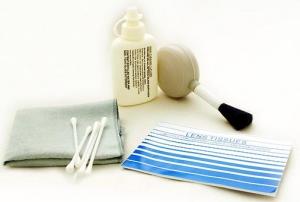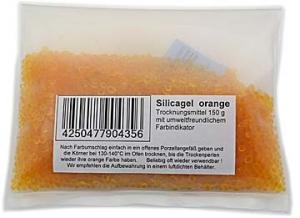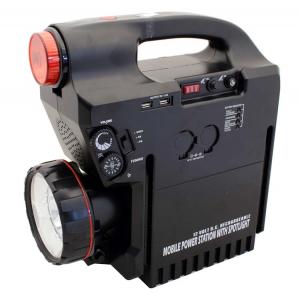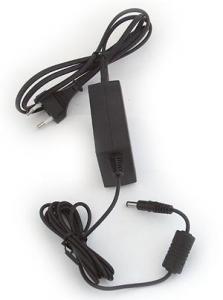- Telescopes
- Overview:
Telescopes - Achromatic Refractor
- Apochromatic Refractor
- Overview:
Apochromatic Refractor - ED Refractor - less color aberration than an achromatic
- SD APO - color free 2-element APO objective
- EDT APO - 3 element ED objective
- High End APO with 3-element APO objective - no color aberation
- Flatfield APO with flat field for Astrophotography
- All Apos and EDs from all manufacturers - large overview
- TS APO and ED from Japan with high quality optics
- Overview:
- Newtonian Telescopes
- Dobsonian Telescopes
- RC Ritchey Chretien Telescopes
- Casssegrain Telescopes
- Reflektor Telescopce with Lens Correcture
- Maksutov Cassegrain Telescopes
- GoTo Telescopes
- Solar Telescopes H-Alpha
- Overview:
- Mounts Tripods Rings Rails Power Supply ...
- Overview:
Mounts Tripods Rings Rails Power Supply ... - Mounts Equatorial with GoTo
- Mounts Equatorial without GoTo
- Mounts Azimutal with GoTo
- Mounts Azimutal without GoTo
- Mounts GoTo - Harmonic Drive
- Travel mounts for astro imaging
- Tripods Piers Polar Wedges
- Mount Control & Electronics
- Dovetail Clamps, Plates and Mount Adapters
- Tube Rings
- Power Supply
- Counterweights Balance Weights
- Mount Accessories - Other
- Overview:
- Telescope Accessories
- Overview:
Telescope Accessories - Eyepieces
- Barlows & Reducer Lenses
- Diagonal Mirrors and Prisms
- Binocular Viewers
- Finder Scopes
- Telescope Collimation and Test
- Cleaning Tools
- Transport and Storage
- Dust protection for Telescopes & Accessories
- Stray Light Protection
- Dewcaps and Heater
- Focusers, Adapters, Motorfocus
- Telescope DIY & Improvement
- Other telescope accessories
- Replacement Parts
- Overview:
- Filters
- Overview:
Filters - Color Filters and Color Filtersets
- Nebular Filters for Visual Observing
- Neutral-Density and Polfilter
- Photo Narrowband Nebular Filters
- Photo Broadband Filters
- Photo Planetary Filters
- Photo R-G-B and IR Cut Filters
- Photo - Filtersets
- Photometric Filters
- Clip Filter for DSLR Cameras
- Filter Wheels and Filterslider
- Solar Filters for white light
- Solarfilter for H-Alpha and Calcium
- Overview:
- Adaptors
- Overview:
Adaptors - Adapter 1,25" and 24,5mm
- Adapter 2"
- Adapter T2 - M42x0.75
- Adapter M48x0,75
- Adapter M54
- Adapter SC
- Adapter M63
- Adapter M68
- Adapter to other Threads
- Adapter Extensions
- Adapter camera bayonet
- Adapter Objective Filterthread
- Adapter Quick Changing , Rotation
- Adapter Eyepiece Projection
- Adapters Tilting
- Overview:
- Astrophotography and Photography
- Overview:
Astrophotography and Photography - Cooled Cameras
- Cameras without Cooling
- Deep-Sky Cameras uncooled
- Set-Offers Camera, Filter, Wheels
- Acessories for Cameras
- Travel mounts for astro imaging
- Imaging Correctors for Telescopes
- Autoguiding Cameras & Sets
- Everything for Guiding
- Focusing aids - Bahtinov mascs
- Flat Field foils and boxes
- Lenses for Cameras
- Piggyback Camera Holder
- Camera Bags, Photocases & more
- Digital Camera and Smartphone Adapter
- Other photo accessories
- Overview:
- Binoculars, Spotting Scopes, Microscopes, Range Finders
- Overview:
Binoculars, Spotting Scopes, Microscopes, Range Finders - Roof Prism Binoculars
- Binoculars with Porro prisms
- Binoculars from 100mm Aperture
- Binoculars with 1,25 inch eyepieces
- TSMX APO Binoculars
- Binoculars for Astronomy
- Binoculars Hiking Bird watching
- Monoculars - Opera Binoculars
- Accessories for Binoculars
- Spotting Scopes
- Range Finders
- Microscopy
- Bags for Phototripods & Binoculars
- Overview:
- Phototripods and Binomounts
- Books, Software
- Overview:
Books, Software - Books for Astronomy Beginners
- Star Charts and Planispheres
- Books about our Solar System
- Observing Tips for Amateurs
- Popular Astronomy Literature
- Teaching material
- Astrophotography books
- Telescopes, Observatories, Construction
- Calendars Yearbooks
- Software, Star Charts
- Books for Microscopers
- Books Nature and Animals
- Nature Photography TimeLapse
- Overview:
- Night Vision, Magnifiers, Weather, Domes & more
- Beginner Astronomy and Gift Ideas
- Second Hand & Special Offers
- New products
Manufacturer: QHY Kameras
Product number: ALCCD8L
EUR1395.00new
EUR 1.395,00
incl. 19 % VAT (DE)
The VAT indicated refers to that applicable in Germany. After logging in, the VAT amount is adjusted to the applicable VAT of the stored delivery country. Therefore, the final price may vary accordingly.
excl. 6.95 € shipping costs (DE)
more details to the shipping costs ...Please log in to calculate shipping costs to your country.
There are no reviews for this product
- Details..
- Technical data..
- In the box..
- Reviews..
- Manufacturer infos..
- Safety informations..
Astrolumina ALccd8L Color CCD Camera - 28.5 mm sensor - 7.8 µm
ALccd cameras are designed for the requirements of ambitious and advanced amateur astro photographers.It is recommended for those who want to step up from a standard DSLR camera to a "real" astro CCD camera without the need of changing the whole accessory system. Because of the similar sensor sized, field corrector systems and other accessories can be kept.
The main difference between the ALccd8L and DSLR cameras is: The Astrolumina camera does not share their disadvantages. DSLR cameras have an IR (and partially red) cut filter in order to deliver sharp and colour-balanced images.
For astrophotography, blocking longer wavelengths is normally not wanted, as H-alpha emitting objects like many gas nebulae cannot be captured well.
The ALccd8L is equipped with a different filter and shows sensitivity over the entire range from approx. 350 to 700 nm, so H-alpha emitting objects like many gas nebulae can be captured with much less integration time.
Nearly all standard DSLR camera have a data depth of 12 bit (4096 levels of grey). For astro imaging, this is not optimal. ALccd cameras work with 16 bit - the advantage is obvious. You gather more contrasty pictures and a fainter limiting magnitude.
Cooling, shutter and suppression of icing:
The design of the ALccd prevents sensor icing by a dew trap.
The progressive scan sensor reading system makes a mechanical shutter unnecessary.
Good storage is an important preventive measure against dew and also extends the service life:
After use, put the camera straight into the TS Protect Case and add some silica gel. During storage, the silica gel absorbs the moisture from the camera. At the same time, the penetration of moist room air is prevented. Dry storage can even partially regenerate the small desiccant tablets in cooled cameras. Your camera or accessories are always ready for you in optimum condition. You can find the silica gel and the case in our product recommendations.
The cameras are not airtight, so if the camera remains on the telescope, it is exposed to moisture. The small amount of desiccant in the camera can protect the sensor and the inside of the protective glass from moisture for the duration of the exposure, but not for days on end. Moisture problems can be the result. A simple trick is to stretch a plastic bag around the focuser to which the camera is attached so that no air can get in. Silica gel is placed in a small cloth bag inside the plastic bag. This will also create a "dry climate zone" for the camera on the telescope. This allows you to leave the camera on the telescope for a few days for an imaging session lasting several days.
In the medium and long term, however, this is no substitute for proper storage in an airtight case with silica gel.
Manual
The manufacturer provides a manual, it can be downloaded from here.
| Sensor Type: | Sony Super HAD ICX413AQ |
| Number of pixels: | 3,110 x 2,030 (6 MPixel) |
| Aktive Pixels: | 3.032 x 2.016 (6 MPixel) |
| Pixel size: | 7.8 µm x 7.8 µm (square) |
| Sensor size: | 25.10 mm x 17.64 mm (28.4 mm active diagonal) |
| Quantum efficiency: | ca. 60% (green), 50% (blue, H-alpha) |
| Chip type: | RGGB-Bayer pattern, Micro lensing |
| Readout noise: | 6-10 e @ 600 kPixel/s |
| Anti blooming gate: | -110 dB |
| Distance from thread to chip: | 20 mm (23 mm with rotation adapter) |
| Data depth: | 16 bit |
| Data transfer: | 10 s 1x1 Binning |
| Data transfer: | 5 s 2x2 Binning |
| Data transfer: | 3 s 4x4 Binning |
| Pre-view and focus imaging: | 2 s 1x1 Binning |
| Pre-view and focus imaging: | 1 s 2x2 Binning |
| Pre-view and focus imaging: | 0,5 s 4x4 Binning |
| Interface: | USB 2.0 |
| Integration time: | 0.02 - 10,000 seconds |
| Cooling: | two-stage thermo-electric (Peltier element) |
| Max. Δt: | 40 °C |
| IR/UV blocking filter: | built-in |
| Size DxH: | 63 mm x 129 mm |
| Weight: | 400 g |
FAQ incl. installation manual:
http://www.astrolumina.de/kamerasysteme/alccd-qhy/faqs/index.php
Download Software:
http://www.astrolumina.de/kamerasysteme/alccd-qhy/software/index.html
http://www.astrolumina.de/kamerasysteme/alccd-qhy/faqs/index.php
Download Software:
http://www.astrolumina.de/kamerasysteme/alccd-qhy/software/index.html
| Manufacturer / Importeur: | Astrolumina Michael Breite |
| Street: | Alfred-Wirth-Straße 12 |
| ZIP / City: | 41812 Erkelenz |
| Country: | Deutschland |
| Telefon number: | +49 2431 9730725 |
| Email: | info@astrolumina.de |
| Website: | www.astrolumina.de |
Safety informations: PDF Download
Recommended accessories
Cleaning & Collimating
Customers who bought this product also bought...
Power Supply
Transport & Covers
TS-Optics Protect Case waterproof hard case - width 271 mm
EUR 34,98RRP EUR 44,95you save 22.2% (EUR 9,97)
Reviews
Written by Frank Bindel
on 2021-03-30
"Noch nicht im Einsatz, Software aber sehr ""altertümlich"""
Written by Jörg Schünemann
on 2017-06-22
"optimales Preis- Leistungsverhältnis"
















